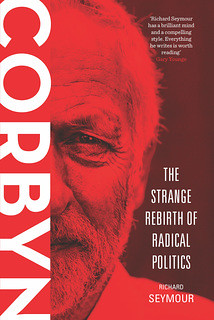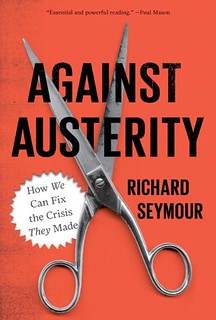Monday, March 16, 2009
Ervand Abrahamian: "Why the Islamic Republic Has Survived" posted by Yoshie
This is the aspect of Iran that one does not learn from most corporate media or even left-wing media.The real answer [to the question of why the Islamic Republic of Iran has survived] lies not in religion, but in economic and social populism. By the early 1970s, Iran had produced a generation of radical intelligentsia that was revolutionary not only in its politics -- wanting to replace the monarchy with a republic -- but in its economic and social outlook. It wanted to transform the class structure root and branch. The trailblazer was a young intellectual named Ali Shariati, who did not live to see the revolution but whose teachings fueled the revolutionary movement. Inspired by the Algerians, Che Guevara and Ho Chi Minh, Shariati spent his short life reinterpreting Shi'ism as a revolutionary ideology and synthesizing it with Marxism. He produced what can be termed a Shi'i version of Catholic liberation theology. His teachings struck a chord not just among college and high school students, but also among younger seminary students. These budding theologians could easily accept his teachings (except his occasional anti-clericalism). One theology student went so far as to describe Imam Husayn as an early Che Guevara and Karbala' as the Sierra Madre. Most of those who organized demonstrations and confrontations in the streets and bazaars during the turbulent months of 1978 were college and high school students inspired mainly by Shariati. His catch phrases -- which had more in common with Third World populism than with conventional Shi'ism -- found their way, sometimes via Khomeini, into slogans and banners displayed throughout the revolution. . . .
This populism helps explain not only the success of the revolution but also the continued survival of the Islamic Republic. The Republic's constitution -- with 175 clauses -- transformed these general aspirations into specific inscribed promises. It pledged to eliminate poverty, illiteracy, slums and unemployment. It also vowed to provide the population with free education, accessible medical care, decent housing, pensions, disability pay and unemployment insurance. "The government," the constitution declared, "has a legal obligation to provide the aforementioned services to every individual in the country." In short, the Islamic Republic promised to create a full-fledged welfare state -- in its proper European, rather than derogatory American, sense.
In the three decades since the revolution, the Islamic Republic -- despite its poor image abroad -- has taken significant steps toward fulfilling these promises. It has done so by giving priority to social rather than military expenditures, and thus dramatically expanding the Ministries of Education, Health, Agriculture, Labor, Housing, Welfare and Social Security. The military consumed as much as 18 percent of the gross domestic product in the last years of the shah. Now it takes up as little as 4 percent. The Ministry of Industries has also grown in most part because in 1979-1980 the state took over numerous large factories whose owners had absconded abroad. The alternative would have been to close them down and create mass unemployment. Since most of these factories had functioned only because of subsidies from the old regime, the new regime had no choice but to continue subsidizing them.
In three decades the regime has come close to eliminating illiteracy among the post-revolutionary generations, reducing the overall rate from 53 percent to 15 percent. The rate among women has fallen from 65 percent to 20 percent. The state has increased the number of students enrolled in primary schools from 4,768,000 to 5,700,000, in secondary schools from 2.1 million to over 7.6 million, in technical schools from 201,000 to 509,000, and in universities from 154,000 to over 1.5 million. The percentage of women in university student populations has gone up from 30 percent to 62 percent. Thanks to medical clinics, life expectancy at birth has increased from 56 to 70, and infant mortality has decreased from 104 to 25 per 1,000. Also thanks to medical clinics, the birth rate has fallen from an all-time high of 3.2 to 2.1, and the fertility rate -- the average number of children born to a woman in her lifetime -- from 7 to 3. It is expected to fall further to 2 by 2012 -- in other words, Iran in the near future will achieve near zero population growth.
The Islamic Republic has bridged the chasm between urban and rural life in part by raising the prices of agricultural goods relative to other commodities and in part by introducing schools, medical clinics, roads, electricity and piped water into the countryside. For the first time ever, villagers can afford consumer goods, even motorbikes and pickup trucks. According to one economist who, on the whole, is critical of the regime, 80 percent of rural households own refrigerators, 77 percent televisions and 76 percent gas stoves. Some 220,000 peasant families, moreover, have received 850,000 hectares of land confiscated from the old elite. They, together with the some 660,000 families who had obtained land under the earlier White Revolution, form a substantial rural class that has benefited not only from these new social services but also from state-subsidized cooperatives and protective tariff walls. This class provides the regime with a rural social base.
The regime has also tackled problems of the urban poor. It has replaced slums with low-income housing, beautified the worst districts and extended electricity, water and sewage lines to working-class districts. As an American journalist highly critical of the regime's economic policies admits, "Iran has become a modern country with few visible signs of squalor." What is more, it has supplemented the income of the underclass -- both rural and urban -- by generously subsidizing bread, fuel, gas, heat, electricity, medicines and public transport. The regime may not have eradicated poverty nor appreciatively narrowed the gap between rich and poor but it has provided the underclass with a safety net. In the words of the same independent-minded economist, "Poverty has declined to an enviable level for middle-income developing countries."
In addition to substantially expanding the central ministries, the Islamic Republic has also set up numerous semi-independent institutions, such as the Mostazafin (Oppressed), Martyrs', Housing, Alavi and Imam Khomeini Relief Foundations. Headed by clerics or other persons appointed by and loyal to the Supreme Leader, these foundations together account for as much as 15 percent of the national economy and control budgets that total as much as half that of the central government. Much of their assets are businesses confiscated from the former elite. The largest of them, the Mostazafin Foundation, administers 140 factories, 120 mines, 470 agribusinesses, 100 construction companies and innumerable rural cooperatives. It also owns the country's two leading newspapers, Ettelaat and Keyhan. According to the Guardian, in 1993 the foundation employed 65,000 and had an annual budget of over $10 billion.5 Some of these foundations also lobby effectively to protect university quotas for war veterans and together they provide hundreds of thousands with wages and benefits, including pensions, housing and health insurance. In other words, they are small welfare states within the larger welfare state. (endnotes omitted, Ervand Abrahamian, "Why the Islamic Republic Has Survived," Middle East Report 250, Spring 2009)
In some respects, left-wing media have more trouble foregrounding the gains of the revolution than even corporate media due to their own perceived socialist propaganda needs. Leftists tend to think that the way to win over workers of Iran is to hammer on only or mainly human rights violations or remaining socio-economic problems, though there is no evidence that their approach is doing any good to their own political prospect (as it doesn't help leftists speak to the experience of working people), let alone the working people of Iran (as it doesn't help working people take an objective look at their own country in comparison to others outside the core of the capitalist system and think strategically about how to make more social change to their benefit). Instead, why not properly recognize the gains of the revolution as such (as Ervand Abrahamian does above) and seek to defend and develop the remaining gains, win back the ones that have been eroded or taken back by the ruling class, and make new gains?
Labels: capitalism, class, ideology, iran, islam, islamism, left, political islam, socialism, working class










